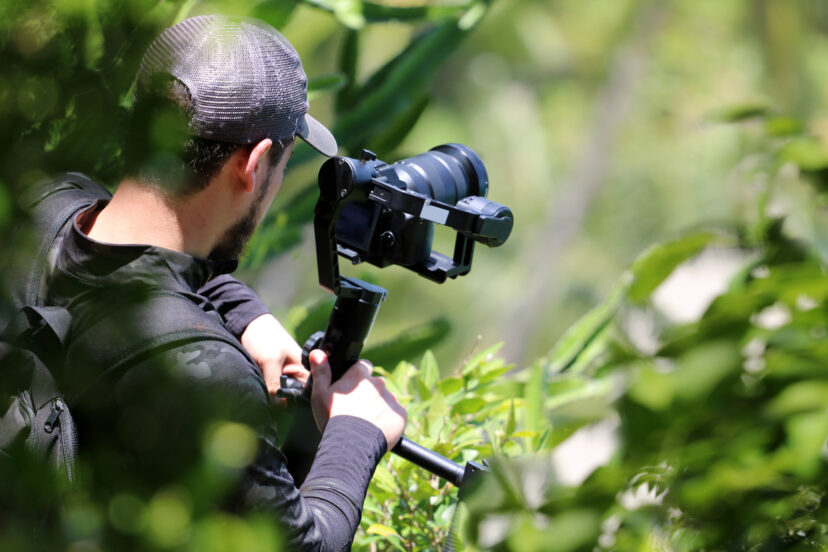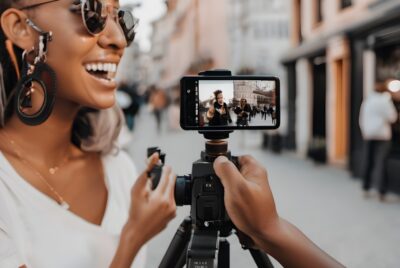Camera Gimbal: Your Ultimate Guide to Smooth Filmmaking
Introduction to Camera Gimbals
When I first started shooting videos, one of the biggest challenges I faced was stabilizing my camera. No matter how steady my hands were, my footage always ended up with shaky, jittery shots. That’s when I discovered the magic of the camera gimbal. These incredible tools have revolutionized the way filmmakers and photographers capture smooth, cinematic shots. In this guide, I’ll walk you through everything you need to know about camera gimbals, from what they are to how to use them effectively.
What is a Camera Gimbal?
A camera gimbal is a device that stabilizes your camera, ensuring that the footage you capture remains smooth even when you’re moving. Gimbals use motors and sensors to counteract unwanted movements, giving you the ability to walk, run, or turn while filming without any shaky effects. It’s essentially a must-have tool for anyone who wants to take their video content to a professional level.
How Does it Work?
Camera gimbals work on the principle of balancing and stabilizing. Inside a gimbal, you’ll find motors connected to sensors that detect your movements. These motors adjust the position of the camera to counteract any motion, keeping the footage steady. There are usually three axes of movement that the gimbal controls—tilt, pan, and roll—allowing for a wide range of fluid movements while shooting.
>>> check range and prices of camera gimbals HERE <<<
Why You Should Use a Camera Gimbal
If you’ve ever watched a well-shot film or video, you’ve likely admired the smooth and stable footage. A camera gimbal is the key to achieving that professional look. Let’s explore why using one can elevate your footage.
Stability and Smoothness
The most obvious benefit of using a camera gimbal is the stability it provides. Without a gimbal, even slight hand movements can cause the footage to appear jerky. A gimbal eliminates these shakes and vibrations, providing smooth, cinematic results, even when you’re moving at full speed or walking over uneven terrain.
Versatility in Filmmaking
One of the coolest things about using a gimbal is the versatility it brings to your shots. Whether you want to film a smooth tracking shot, create a dramatic slow-motion movement, or capture a perfectly stable panning shot, a gimbal can do it all. With a bit of practice, you’ll be able to produce stunning footage that looks as though it was shot with a multi-million dollar camera rig.
Types of Camera Gimbals
Gimbals come in different shapes and sizes to suit various shooting needs. Let’s take a look at the most common types.
Handheld Gimbals
These are the most popular type of gimbals, especially for independent filmmakers and vloggers. Handheld gimbals are lightweight, compact, and easy to use. They’re perfect for shooting on the go, and their portability makes them great for travel.
Camera Mounted Gimbals
For more professional setups, camera-mounted gimbals attach to rigs or other equipment. These gimbals are larger and offer enhanced stability, making them ideal for larger cameras and demanding filming conditions.
Drone Gimbals
If you’re shooting aerial footage, you’ll need a specialized drone gimbal. These gimbals are designed to stabilize your camera while flying, ensuring smooth, steady shots from the sky.
Choosing the Right Gimbal
Choosing the right gimbal for your needs can be a bit overwhelming with so many options available. Here are a few things to consider when making your decision.
Weight Capacity
Before buying a gimbal, make sure it can support the weight of your camera. Each gimbal has a weight limit, and if your camera is too heavy, the gimbal won’t be able to stabilize it properly. Always check the manufacturer’s guidelines for weight capacity to ensure compatibility.
Battery Life and Charging
Battery life is a crucial consideration, especially if you’re planning to shoot for extended periods. Some gimbals offer up to 12 hours of battery life, while others may last less. Always choose a gimbal with a battery life that suits your shooting schedule, and make sure you have extra batteries or a charging plan for longer sessions.
Gimbal Features to Consider
Some gimbals come with additional features like app compatibility, motor strength, and preset modes. Features like “follow mode” or “pan mode” can make certain shots easier to achieve, and many gimbals now allow you to control settings via a smartphone app. These are helpful features to look out for when choosing a gimbal.
How to Use a Camera Gimbal Effectively
Once you’ve chosen the right gimbal, it’s time to start shooting. But before you begin, it’s important to understand how to use your gimbal effectively.
Balancing Your Gimbal
One of the most important steps before you start filming is balancing your gimbal. If your gimbal is unbalanced, it won’t perform correctly and could even damage your camera. To balance it, make sure your camera is positioned properly on the gimbal and adjust the settings until everything is aligned.
Proper Hand Placement and Grip
When using a handheld gimbal, it’s important to have a firm but relaxed grip. Hold the gimbal with both hands—one on the handle and the other on the top or side. This will give you better control and help reduce any fatigue from holding it for long periods.
Maintenance
Taking care of your camera gimbal is essential to ensuring it performs well for years. Regular maintenance can save you money on repairs and extend the lifespan of your gear.
Cleaning and Storing Your Gimbal
After each shoot, clean your gimbal with a microfiber cloth to remove dirt and dust. Make sure to store it in a protective case to avoid damage from knocks and drops. It’s also a good idea to keep the motors free from any debris that could interfere with their movement.
Software Updates
Many modern gimbals come with firmware that can be updated via apps or computers. Keeping your gimbal’s software up to date ensures that you have access to the latest features and improvements.
>>> check range and prices of camera gimbals HERE <<<
Common Gimbal Mistakes to Avoid
Even seasoned filmmakers make mistakes with their gimbals. Here are some common issues to avoid when using your gimbal.
Improper Balancing
If your gimbal isn’t properly balanced, it won’t stabilize your camera effectively. Always take the time to balance your gear before each shoot to ensure smooth footage.
Overloading the Gimbal
Avoid overloading your gimbal with a camera that’s too heavy. This can strain the motors and result in poor performance. Always check the weight capacity and make sure your gear is compatible with the gimbal.
Conclusion
Camera gimbals are indispensable tools for anyone serious about capturing smooth, cinematic video. Whether you’re a hobbyist or a professional filmmaker, investing in a quality gimbal can significantly improve the quality of your footage. By choosing the right gimbal, understanding how to use it effectively, and taking care of it, you’ll be able to elevate your video production skills and achieve stunning results.
>>> check range and prices of camera gimbals HERE <<<
FAQs
- How do I know if my camera is compatible with a gimbal?
- Check the gimbal’s weight capacity and ensure your camera falls within the specified range. You can find this information on the product page or the user manual.
- Can I use a gimbal with any type of camera?
- Most gimbals are designed for DSLRs, mirrorless cameras, and smartphones. Larger cameras like cinema rigs may require a more heavy-duty gimbal.
- How do I improve my gimbal shots?
- Practice makes perfect! Focus on keeping your movements smooth and deliberate, and try different types of shots to see what works best for your style. Make sure you have mastered photography basics.
- Do I need to calibrate my gimbal every time I use it?
- Not necessarily. Calibration is typically only needed when you first set up your gimbal or if you change the balance. After that, it should maintain its settings.
- Can I use a gimbal for time-lapse photography?
- Yes! Many gimbals allow you to set the camera for slow or smooth movements, which can be used for creating stunning time-lapse footage.
Further reading
Check out our other relevant articles:
Art of Portrait Photography: Master Techniques for Stunning Shots
Here are two links to educational resources related to camera gimbals:
- DJI Tutorials – Camera Gimbal Setup and Tips
https://www.dji.com/learn
This page provides in-depth tutorials and guides on setting up and using DJI gimbals, perfect for beginners and pros alike. - The Best Camera Gimbals for Smooth Video (The Verge)
https://www.theverge.com/2019/6/7/18653504/best-camera-gimbal-buy-dji-ronin-vlogger-steadicam
The Verge’s guide offers insights on the best camera gimbals available, along with expert commentary on their features and how they improve filming.





Comments are closed.